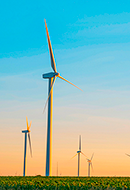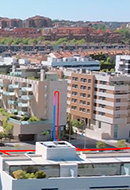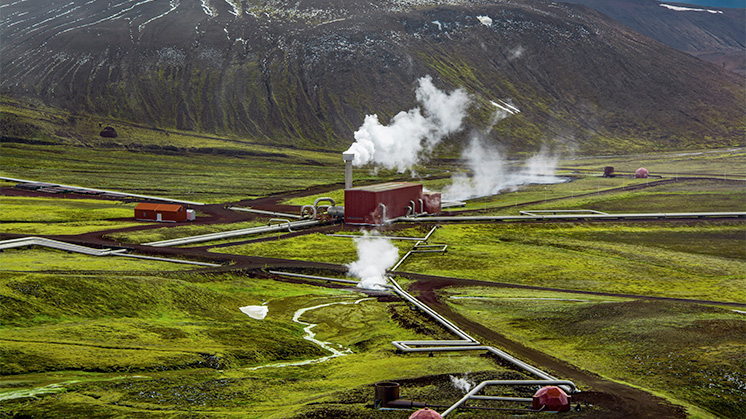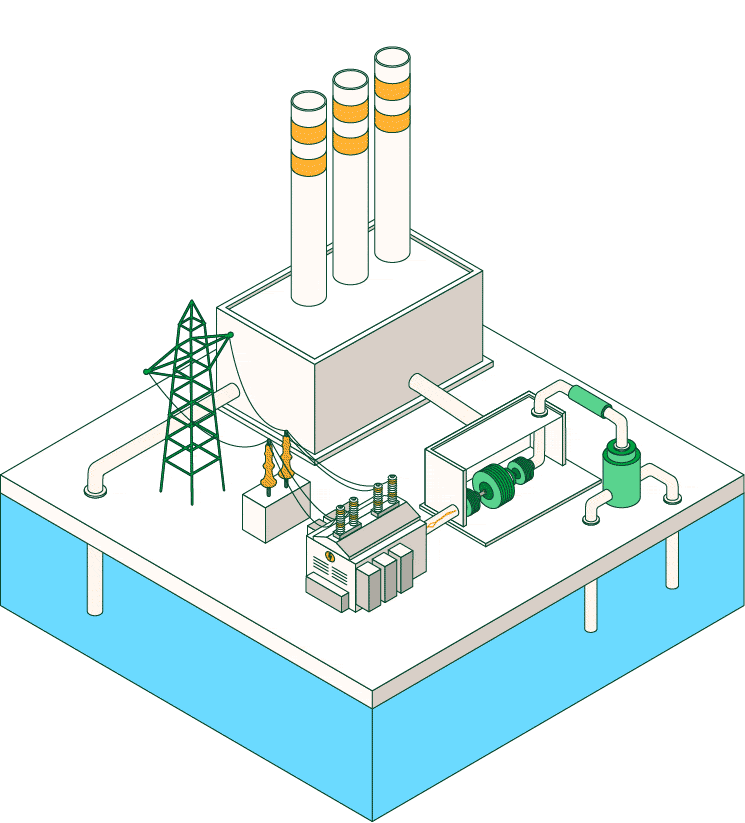Geothermal energy
Geothermal energy: what is it, how does it work and what are its advantages?
Decarbonisation Renewable energy
Geothermal energy makes it possible to use heat from inside the earth for electricity, hot water and heating, offering an alternative to fossil fuels. Although it is a type of renewable energy with many years of history, it is still largely unknown. Find out what geothermal energy is, how it works and its advantages.
The thermal energy harboured by nature has been known since ancient times, when the feared volcanic eruptions threatened the survival of crops and populations. However, the ability to harness this heat from within the earth's interior and transform it into geothermal energy began in the 19th century.
In 1818, the French engineer and entrepreneur François Jacques de Larderel developed a technique for collecting steam emitted by cracks in the ground through which boiling water and underground fumes flow near Montecerboli (Italy). He used it to heat the boilers in a chemical factory producing boric acid and succeeded in increasing both productivity and energy savings. Larderel's ingenuity was the starting signal for the development of geothermal production in the 20th century.
Despite its long history and the growing importance of renewable energies in advancing the energy transition, geothermal energy is still little known. We will tell you what this type of energy is, what it is used for, how it works and what its advantages are.
What is geothermal energy?
The Greek etymology of the name gives us many clues as to what geothermal energy involves: geō (earth) and thermós (heat). That is, energy that comes from the heat of the earth. The European Geothermal Energy Council (EGEC) defines it as "energy stored in the form of heat below the earth's surface". This definition refers to heat stored in rocks, soils and groundwater, whatever their temperature, depth or source.
It is considered a renewable and clean energy. The heat it provides is unlimited and the temperature of the subsoil is very stable, which allows high energy yields to be obtained.
There are different types of geothermal energy depending on the type of natural resource from which it is extracted (hot water, dry wells, geysers, dry steam), the depth of drilling (shallow, from a few metres to great depths above 10 km) or the temperature of the water (from high to low temperature), among others.

Driving a sustainable transition
At Iberdrola, we are committed to spearheading the energy transition

Heat Networks: Innovation in Thermal Management
Heat networks are responsible for supplying thermal energy to multiple users

What is clean energy?
Clean energies take a stand to preserve the environment.
What is geothermal energy used for?
Geothermal energy can be used to produce electricity or for thermal purposes. The possibilities of this type of energy depend mainly on the temperature at which the geothermal resources are located:
- Low temperature (less than 100 degrees Celsius). The energy obtained is used for thermal utilisation in industrial and agricultural processes, in district heating and cooling systems and to generate domestic hot water.
- Medium temperature (between 100 and 150 degrees centigrade). Its applications are mainly thermal (heating, domestic hot water, etc.) in the industrial, residential and service sectors. To a lesser extent, it is used in the generation of electrical energy.
- At high temperature (over 150 degrees Celsius). It is used to produce electrical energy. It is also occasionally used in geothermal heating systems.
How do geothermal power plants extract energy?
The earth is made up of several rocky strata or layers that run from the centre to the outermost zone. The planet's core is a solid, glowing mass of minerals, molten rocks and gases, predominantly iron and nickel. Above the core is the mantle, also quite fluid and hot, and finally the Earth's crust, the shallowest layer, which is still about 20 km thick.
When water from precipitation seeps through the earth's crust, it forms masses of water (deep streams and aquifers) which, when in contact with the heat of the subsoil, give rise to a geothermal reservoir consisting of water and steam at high temperatures. Sometimes the heat exists, but not the aquifer, so in order to exploit geothermal energy it is necessary to inject a fluid that allows it to be extracted (usually water).
Geothermal power plants extract thermal energy in the form of hot water and steam. At the surface, this energy is harnessed either directly by separating the steam from the mixture with a cyclone separator or indirectly using a heat exchanger. The excess water is re-injected back underground to restart the cycle and the resulting steam is sent to a turbine to generate electricity.
![]() SEE INFOGRAPHIC: How does a geothermal power plant work [PDF]
SEE INFOGRAPHIC: How does a geothermal power plant work [PDF]
Advantages and disadvantages of geothermal energy
The main drawback of geothermal energy is the high initial investment required for the installation of the system, as well as the risk that drilling will not find the necessary geothermal resource.
Geothermal energy can only be exploited relatively easily if there is an "anomalous" resource, i.e., greater than conventional heat at shallow depths. This only occurs in geologically active areas with volcanoes or tectonic faults.
By contrast, the advantages of geothermal energy are extensive:
![]() As a renewable source of continuous production, it is a great alternative to fossil fuels.
As a renewable source of continuous production, it is a great alternative to fossil fuels.
![]() It is a stable energy because it does not depend on the fluctuations of meteorological resources such as wind or sun.
It is a stable energy because it does not depend on the fluctuations of meteorological resources such as wind or sun.
![]() Geothermal resources are virtually inexhaustible on a human scale.
Geothermal resources are virtually inexhaustible on a human scale.
![]() It represents a great saving, both economically and in terms of energy. Although the initial investment is significant, it offers great durability and requires little maintenance.
It represents a great saving, both economically and in terms of energy. Although the initial investment is significant, it offers great durability and requires little maintenance.
![]() Geothermal installations have a low visual impact and do not generate external noise. In addition, the waste produced is minimal.
Geothermal installations have a low visual impact and do not generate external noise. In addition, the waste produced is minimal.
![]() Geothermal energy generates employment opportunities: around 100,000 people worldwide are employed in geothermal installations, according to the International Renewable Energy Agency (IRENA).
Geothermal energy generates employment opportunities: around 100,000 people worldwide are employed in geothermal installations, according to the International Renewable Energy Agency (IRENA).
The geothermal potential would be practically inexhaustible if drilling technology would allow us to reach a depth of 10 to 12 km at a reasonable cost. There, even if it is not a volcanic area, we would find enough temperature to produce electricity.
Today, there are technological advances, still under development, that may seem like science fiction but could become a reality. One example is the company QUAISE (an MIT spin-off with which Iberdrola collaborates), which uses microwave plasma to vaporise the material it finds as it goes deeper.









